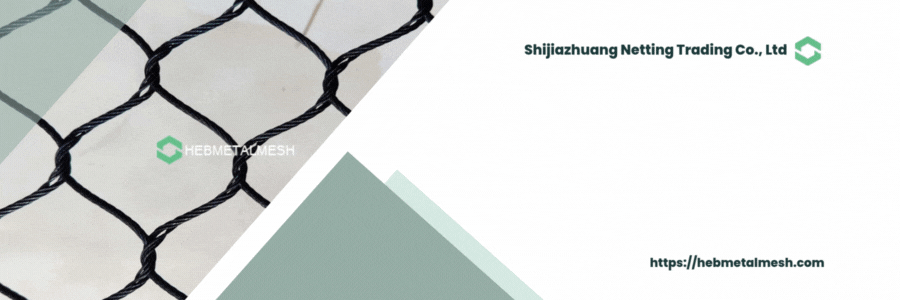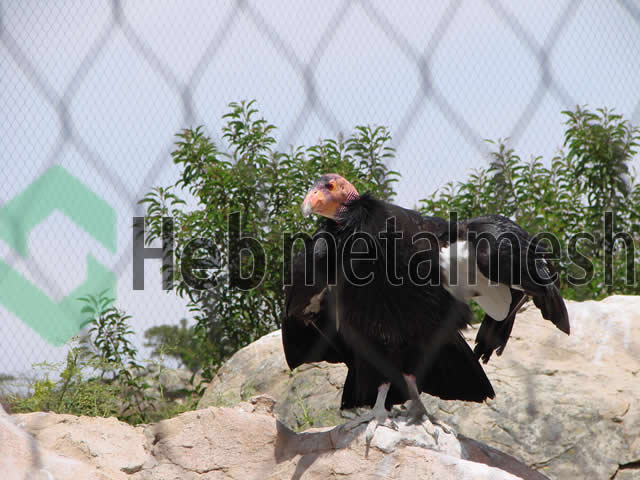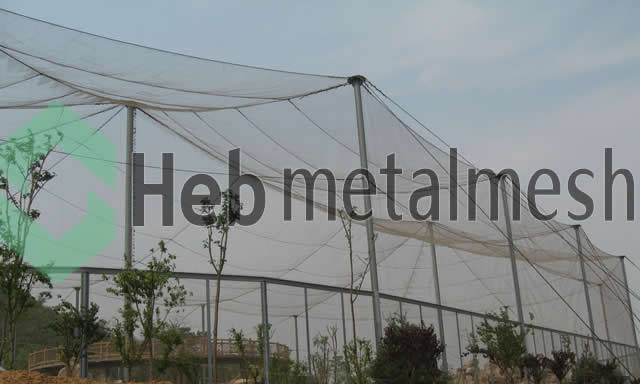Understanding Bird Habitats
Bird habitats play a crucial role in sustaining avian biodiversity and maintaining ecological balance. As natural environments that provide necessary resources for birds, these habitats encompass various ecosystems such as forests, wetlands, grasslands, and urban settings. Each type of habitat delivers distinct advantages and meets the diverse needs of different bird species, from nesting and feeding to shelter and migration.
Forests, for instance, are vital bird habitats characterized by a diverse array of trees, shrubs, and plants that offer ample food and nesting options. Woodpeckers and songbirds thrive in these environments, utilizing tree cavities for shelter and feeding off insects hidden beneath the bark. Similarly, wetlands serve as critical bird habitats, teeming with aquatic plants and insects that many species rely on for sustenance. Birds such as herons and ducks can often be found in these regions, benefiting from the rich food supply and calm waters ideal for breeding.
Grasslands also represent significant bird habitats, hosting various grass-dwelling species like meadowlarks and sparrows. These open areas provide necessary coverage for nesting, as well as abundant insects and seeds for feeding. Urban environments, while often perceived as less suitable for wildlife, have increasingly become essential bird habitats as well. Parks, gardens, and green rooftops can support various birds by providing food sources and nesting sites amid concrete landscapes.
Ultimately, understanding the specific needs of bird species is fundamental for creating suitable bird habitats at home. A variety of natural elements, such as plants that attract insects and provide shelter, become crucial for enhancing the backyard ecosystem. By acknowledging the importance of these diverse bird habitats, individuals can contribute to avian conservation and enjoy the benefits of birdwatching in their own outdoor spaces.
Why Choose Aviary Netting?
Aviary netting serves as a crucial component for anyone looking to create a safe and vibrant bird habitat in their outdoor space. The advantages of utilizing high-quality aviary netting, particularly those offered by Hebmetalmeshs, are numerous and impactful. One of the primary benefits is durability; premium netting is constructed from materials that are resistant to the wear and tear of natural elements such as sun, rain, and wind. This durability ensures that your bird habitat remains secure and intact over time, allowing you to focus on the enjoyment of watching your feathered friends without the constant worry of deterioration.
In addition to durability, safety is an essential aspect of aviary netting. It provides a protective barrier that keeps pets and predators at bay while allowing birds to thrive in a controlled environment. The design and material used in Hebmetalmeshs’ aviary netting ensure that even the smallest birds cannot escape, nor can larger predators intrude. This creates a sanctuary where birds can live, breed, and forage freely without the constant threat of injury or loss.
Aesthetics also play a vital role in the decision to choose aviary netting. Unlike traditional fencing or barriers that can obstruct the natural beauty of your garden or outdoor space, high-quality aviary netting is often less intrusive and blends seamlessly with the surroundings. This helps maintain an inviting and harmonious atmosphere, showcasing your bird habitat as a highlight of your landscape rather than a hindrance. Choosing the right aviary netting means investing in the well-being of the birds and enhancing the overall appeal of your garden. Ultimately, selecting high-quality materials for your bird habitat not only prioritizes the health and safety of your feathered guests but also enriches your outdoor environment.
The Unique Selling Proposition of Hebmetalmeshs
Hebmetalmeshs has established itself as a leading supplier of aviary netting, offering a range of products that cater to diverse bird habitat requirements. One of the key features that distinguishes Hebmetalmeshs in the industry is its commitment to maintaining factory prices that are competitive on a global scale. This ensures that customers can access high-quality materials for their bird enclosures without straining their budgets. The affordability of Hebmetalmeshs’ offerings allows clients from various backgrounds—whether hobbyists, conservationists, or commercial aviary operators—to create safe environments for their feathered clients.
Moreover, the company places a strong emphasis on quality and customer satisfaction. Every piece of netting produced undergoes rigorous quality control processes to guarantee durability and reliability. This commitment to craftsmanship is evident in the materials used, which are designed to withstand environmental challenges while providing optimal safety for birds. Whether it is UV-treated netting to prevent wear from sunlight or anti-rust options for humid conditions, Hebmetalmeshs covers all bases, ensuring that every bird habitat is not only functional but also resilient.
In addition to quality and affordability, Hebmetalmeshs boasts an exceptional array of netting options suited for various bird species and habitat sizes. Their product lineup includes different mesh sizes and materials, allowing customers to customize their bird habitats according to specific needs. This range means that whether one is looking to protect small passerines or larger avians, there is a tailored solution available. By understanding the unique behaviors, sizes, and environmental needs of different bird species, Hebmetalmeshs has positioned itself as a comprehensive supplier capable of meeting the full spectrum of bird habitat demands.
Designing Your Bird Habitat with Aviary Netting

Creating a remarkable bird habitat using aviary netting involves several essential factors that contribute to the safety and comfort of the birds you wish to attract. First and foremost, consider the location of your bird habitat. Select an area that offers natural shelter, such as trees or shrubs, while also ensuring that the site receives adequate sunlight throughout the day. This balance will not only enhance the appeal of your bird habitat but also provide essential warmth and protection.
Next, assess the space requirements for the type of birds you hope to attract. Different species have varying needs for space, so it is crucial to research the bird varieties that inhabit your area to tailor the habitat accordingly. Ensure ample room for flying and nesting, as birds require both to thrive. A well-planned aviary should offer a vertical dimension, incorporating tall structures or branches to accommodate birds’ natural instinct to perch and explore.
Once you have settled on a location and considered the space requirements, the next step is to measure and plan for the installation of the aviary netting. Start by determining the dimensions of your desired enclosure. Use stakes and string to outline the perimeter, ensuring you account for any ground vegetation that may need trimming. Following this, acquire aviary netting that suits your design and the scale of your habitat. Netting not only creates a secure environment for birds but also allows them to enjoy the outdoors without the risk of predators.
When installing the netting, secure it tightly to avoid sagging or loose spots that could pose dangers to the birds. Consider integrating the netting with your existing landscaping by using natural materials that blend seamlessly into the surroundings. Innovative design ideas, such as incorporating bird feeders and baths within the habitat, can further entice various species, enriching the avian experience.
Construction Best Practices for a Bird Habitat
Creating a robust and effective bird habitat involves careful consideration of various factors, starting with the selection and installation of aviary netting. This crucial element serves as a barrier while providing a safe environment for our feathered friends. When embarking on this construction project, the first step is to choose high-quality netting that is durable and suitable for the local bird species. Options made from UV-resistant materials will extend the lifespan of your bird habitat, ensuring continuous protection against both the elements and potential predators.
Prior to installation, it is essential to prepare the area where the aviary will be located. Ensure that the ground is free from debris and sharp objects that could harm birds. Additionally, consider the surrounding environment, including the availability of natural vegetation that can supplement the habitat. Safety precautions should always be observed; this means wearing protective gear such as gloves and goggles during installation to prevent injuries. Furthermore, securing the netting tightly to avoid sagging can help in maintaining the overall structure’s stability.
Following proper installation techniques is vital for creating an effective bird habitat. The netting should be affixed to a strong frame, ideally made from corrosion-resistant materials. Make use of appropriate fasteners to guarantee that the netting remains taut and in place. After construction, regular maintenance checks are necessary to identify any wear and tear. Inspect the netting for any holes or tears, and repair them swiftly to ensure that birds remain safe within their haven.
Designing a bird habitat requires attention to detail, ensuring it is inviting for birds while maintaining their safety. By adhering to these construction best practices, you can create a peaceful environment where birds can thrive undisturbed, transforming your outdoor space into an enchanting sanctuary.
Selecting the Right Bird Species
Choosing the appropriate bird species for your newly established bird habitat is a crucial aspect that impacts not only the aesthetic appeal of your outdoor space but also the overall ecosystem. Factors such as local climate, space availability, and the specific needs of various bird species must be considered during this selection process.
First, it is essential to assess the local climate, as it significantly influences the types of birds that can thrive in your habitat. Research the native bird species in your region; they are typically well-adapted to the local weather conditions, providing you with a sustainable option for attracting wildlife. For example, if your habitat is located in a temperate zone, you may consider species such as blue jays and cardinals, which are not only visually striking but also contribute positively to your garden’s biodiversity.
Space availability is another crucial element to consider. Some bird species require more room to move, forage, and nest. Larger species like hawks or owls may need broader territories than smaller songbirds. Therefore, evaluating your garden’s size will help in selecting the right mix of bird species that can coexist harmoniously. Furthermore, providing varied environments, such as trees, shrubs, and open spaces, can accommodate a wider diversity of avian visitors.
In addition, it’s important to consider each bird species’ specific dietary and habitat preferences. Factors such as seed availability, water sources, and potential nesting sites can influence your selection. By enriching your bird habitat with various plants, feeders, and other natural resources, you can maximize enjoyment and attract different species, thereby enhancing not only your outdoor experience but also supporting local ecosystems. The joy of watching diverse bird species thrive in your yard creates a unique connection to nature, making the effort truly worthwhile.
The Benefits of a Bird-Friendly Environment
Creating a bird-friendly environment in your backyard offers a myriad of benefits that extend beyond simple aesthetics. One of the most significant ecological advantages of establishing a bird habitat is its contribution to natural pest control. Birds play a crucial role in managing insect populations, consuming pests such as aphids, caterpillars, and mosquitoes that can otherwise damage plants and disrupt local ecosystems. By attracting birds to your garden, you cultivate a balanced environment where the need for chemical pesticides is significantly reduced.
Moreover, birds are vital pollinators for many plant species. Their activities facilitate the reproduction of flowers, which in turn supports a thriving ecosystem. When you create a bird habitat, you inadvertently promote biodiversity, allowing various species to flourish in your outdoor space. This interaction not only enhances your garden’s health but also contributes positively to your local environment, fostering a sustainable ecosystem.
Beyond these ecological benefits, enhancing your outdoor space with elements that attract birds significantly impacts personal well-being. Birdwatching has been shown to reduce stress and increase feelings of relaxation. Observing these avian visitors can transform a simple garden into a serene oasis where one can unwind and connect with nature. As you watch birds flit about, feeding and interacting with each other, you may experience a profound sense of joy and tranquility.
Furthermore, engaging with birdlife can serve as an excellent educational opportunity for families and children, fostering a deeper appreciation for nature and environmental stewardship. By building a dedicated bird habitat, you not only invest in the health of your local ecosystem but also cultivate a richer, more fulfilling outdoor experience for yourself and your loved ones. The fusion of environmental benefits and personal enjoyment makes creating a bird-friendly environment a rewarding endeavor.
Success Stories and Case Studies
Across the globe, numerous individuals have transformed their outdoor spaces into thriving havens for birdlife using Hebmetalmeshs’ aviary netting. One such inspiring story is that of the Johnson family from Oregon, who decided to convert their sprawling backyard into a vibrant bird habitat. Initially, their garden was merely a patch of grass with a few scattered trees. After installing the high-quality aviary netting, they not only shielded their garden from invasive species but also created a safe environment for various local birds. Over the course of just a few months, the Johnsons witnessed an influx of colorful songbirds and even some rare species, turning their backyard into a sanctuary for wildlife enthusiasts.
Another remarkable case comes from the Thompson couple in Florida, who struggled for years with pests invading their flowers and vegetables. With the installation of Hebmetalmeshs’ aviary netting, they successfully warded off unwanted critters while simultaneously attracting a plethora of birds. The couple reported that not only did their garden flourish due to the natural pest control provided by the birds, but their quality of life improved dramatically as they enjoyed birdwatching from their porch. They described feeling a deep sense of satisfaction and connection to nature, which further encouraged them to enhance their bird habitat with native plants, making their garden even more appealing.
A notable feature of these transformations is not just the ecological benefits but also the psychological and emotional impacts on the homeowners. Testimonials reveal feelings of peace and joy as families enjoy daily interactions with nature right in their backyards. Whether it’s the soft chirping of songbirds or the joyful flutter of wings, the presence of birds enhances the overall atmosphere, allowing individuals and families to reconnect with the natural world. Such experiences underscore the immense potential that aviary netting has in creating beneficial bird habitats in suburban environments.
FAQs
A bird habitat is a natural environment that provides the essential resources birds need to survive, including food, water, shelter, and nesting sites. These habitats—such as forests, wetlands, grasslands, or urban gardens—directly influence bird biodiversity. Protecting bird habitats is critical for conservation, as habitat loss is a leading cause of declining bird populations. Preserving diverse ecosystems ensures birds can thrive and maintain ecological balance.
To create a bird-friendly backyard habitat, focus on providing native plants, water sources (like birdbaths), and shelter (e.g., shrubs, birdhouses). Incorporate long-tail keywords like “best plants for attracting birds in [your region]” to tailor your approach. Avoid pesticides, add feeders with species-specific food, and ensure year-round resources. This setup supports local birds and fosters a sustainable micro-habitat.
Seasonal changes dramatically impact bird habitats. In winter, birds rely on evergreen trees and reliable food sources, while spring habitats must offer nesting materials and insect populations. Migratory birds depend on “stopover habitats” during long journeys. Understanding “how to prepare bird habitats for seasonal shifts” helps enthusiasts support birds year-round through strategic planting and resource management.
Major threats include urbanization, deforestation, climate change, and pollution. Long-tail issues like “how does climate change alter migratory bird habitats?” highlight rising temperatures disrupting migration patterns and food availability. Wetland drainage and pesticide use also degrade habitats. Conservation efforts, such as supporting protected areas and reducing carbon footprints, can mitigate these risks.
Yes! Urban bird habitats thrive in parks, green rooftops, and balconies with native plants. Focus on “creating urban bird habitats with limited space” by using vertical gardens, installing window-safe feeders, and providing water. Species like sparrows and pigeons adapt well, but even rare birds may visit if the habitat meets their needs. Reducing light pollution and glass collisions also helps urban birds.
Native plants are vital because they co-evolved with local birds, providing ideal food (berries, seeds, insects) and nesting materials. A long-tail keyword like “best native plants for supporting songbird habitats in the Midwest” emphasizes regional specificity. Non-native plants often lack nutritional value and may become invasive, disrupting ecosystems. Prioritizing natives boosts biodiversity and creates resilient habitats.
Where to Purchase Hebmetalmeshs’ Aviary Netting
Acquiring Hebmetalmeshs’ aviary netting is a straightforward process, allowing individuals to easily enhance their bird habitat. Customers may purchase directly from the manufacturer’s website, which provides a user-friendly online store. To begin, potential buyers should navigate to the dedicated section for aviary netting, where they will find options that cater to various sizes and specifications necessary for their particular bird habitats.
Once the desired netting is selected, customers can add the product to their shopping cart. The online platform strongly emphasizes convenience, featuring a streamlined checkout process that supports multiple payment options. Acceptable methods typically include credit cards, PayPal, and other popular digital payment services. This variety ensures that shoppers can complete their transactions safely and securely, regardless of their preferred payment method.
Shipping is another crucial aspect to consider when ordering from Hebmetalmeshs. The company is committed to global accessibility, offering shipping options to customers worldwide. After finalizing the purchase, customers can expect timely delivery based on their location and the chosen shipping methods. Tracking information is generally provided to enhance transparency regarding order status and anticipated delivery times, further contributing to a positive buying experience.
Moreover, it is worth noting that Hebmetalmeshs prides itself on the quality of its aviary netting. The company guarantees that all products meet high standards of durability and are competitively priced, making them an excellent investment for anyone looking to create or improve their bird habitat. With a commitment to customer satisfaction and relentless attention to quality, purchasing aviary netting from Hebmetalmeshs is a practical choice for bird enthusiasts around the globe.



